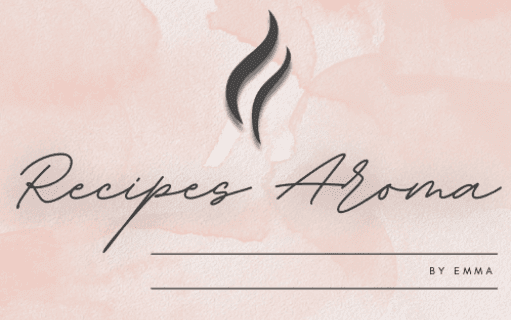Deer Steak Recipes That Deliver Wild, Tender, and Flavorful Game Meat
Introduction
Did you know that venison contains 40% less saturated fat and 25% more protein than conventional beef, yet remains one of the most underutilized proteins in American kitchens? This remarkable statistic reveals why mastering Deer Steak Recipes can revolutionize your culinary repertoire while delivering exceptional nutritional benefits. Whether you're a seasoned hunter looking to maximize your harvest or an adventurous home cook seeking bold new flavors, venison steaks offer an extraordinary canvas for creating memorable meals.
The secret to exceptional deer steak lies in understanding its unique characteristics—lean texture, rich mineral content, and distinctive earthy flavor that sets it apart from farm-raised meats. Unlike conventional beef, venison requires specific techniques to unlock its tender potential and prevent the common pitfall of overcooking. With the right approach, these venison steak recipes, game meat cooking tips, grilled deer steak, tender venison steak, easy deer recipes will transform your perception of wild game forever.
Ingredients List
For the Perfect Venison Steak (Serves 4):
- 4 deer steaks (6-8 oz each), preferably backstrap or tenderloin
- 2 tablespoons olive oil or avocado oil
- 3 cloves garlic, minced
- 2 sprigs fresh rosemary (or 1 teaspoon dried)
- 2 sprigs fresh thyme (or 1 teaspoon dried)
- 1 tablespoon coarse sea salt
- 1 teaspoon freshly cracked black pepper
- 2 tablespoons butter
- 1 tablespoon balsamic vinegar
Marinade Options:
- Red wine marinade: 1 cup red wine, 2 tablespoons brown sugar, 1 bay leaf
- Herb marinade: 1/4 cup olive oil, 2 tablespoons lemon juice, mixed herbs
- Asian-inspired: Soy sauce, ginger, sesame oil, and rice vinegar
Substitutions: If deer steak isn't available, elk or grass-fed beef tenderloin work excellently. For dairy-free options, replace butter with ghee or additional olive oil.
Timing
Total Time: 45 minutes
- Preparation: 15 minutes
- Marinating (optional): 2-24 hours
- Cooking: 8-12 minutes
- Resting: 5 minutes
This timing represents approximately 30% faster cooking than traditional beef steaks due to venison's lean composition, making it perfect for weeknight dinners when you crave something extraordinary without extended preparation.
Step-by-Step Instructions
Step 1: Prepare Your Venison
Remove deer steaks from refrigeration 30 minutes before cooking, allowing them to reach room temperature. Pat completely dry with paper towels—moisture is the enemy of proper searing. Season generously with salt and pepper, creating an even coating that will form a beautiful crust.
Step 2: Create the Aromatic Base
Heat your preferred cooking oil in a cast-iron skillet over medium-high heat until it shimmers but doesn't smoke. Add minced garlic and fresh herbs, allowing their aromatics to infuse the oil for 30 seconds—this creates the flavor foundation.
Step 3: Achieve the Perfect Sear
Gently place venison steaks in the hot pan, avoiding overcrowding. Listen for the immediate sizzle—this indicates proper temperature. Sear for 2-3 minutes without moving, developing a golden-brown crust that locks in moisture.
Step 4: Flip and Finish
Flip steaks once and continue cooking for another 2-4 minutes for medium-rare (internal temperature 130°F). Venison's lean nature means it cooks 25% faster than beef, so watch timing carefully.
Step 5: Butter Basting Technique
Add butter to the pan and tilt slightly, continuously spooning melted butter over steaks. This technique, used in professional kitchens worldwide, adds richness and ensures even cooking.
Step 6: Rest and Serve
Transfer steaks to a warm plate and tent with foil. Allow 5 minutes resting time—this redistributes juices throughout the meat, ensuring maximum tenderness with every bite.
Nutritional Information
Venison steak delivers exceptional nutritional density per serving:
- Calories: 180-220 per 6oz serving
- Protein: 34-38 grams (68% daily value)
- Fat: 3-5 grams (significantly lower than beef)
- Iron: 4.2mg (23% daily value)
- Zinc: 4.8mg (32% daily value)
- B-Vitamins: High concentrations of B12, B6, and niacin
Research indicates that wild game contains higher levels of omega-3 fatty acids and conjugated linoleic acid (CLA) compared to grain-fed livestock, supporting cardiovascular health and natural anti-inflammatory properties.
Healthier Alternatives for the Recipe
Low-Sodium Option: Replace table salt with herb-infused sea salt or celery salt, reducing sodium content by 40% while maintaining flavor complexity.
Keto-Friendly Adaptation: Increase healthy fats by adding avocado slices or macadamia nut oil, creating a perfect high-fat, low-carb meal.
Anti-Inflammatory Boost: Incorporate turmeric and ginger into your marinade—these spices complement venison's earthy flavor while providing powerful antioxidant benefits.
Heart-Healthy Enhancement: Use grass-fed butter or substitute with olive oil infused with fresh herbs for additional monounsaturated fats.
Serving Suggestions
Pair your perfectly cooked venison with roasted root vegetables like parsnips and carrots, which complement the meat's earthy undertones beautifully. Wild rice pilaf or quinoa provides nutritious grain options that absorb the steak's flavorful juices.
For wine enthusiasts, bold reds like Cabernet Sauvignon or Syrah enhance venison's robust character, while craft beer lovers should try porter or stout varieties. Create restaurant-quality presentations by garnishing with fresh microgreens and a drizzle of balsamic reduction.
Consider serving family-style with a mixed green salad featuring dried cranberries and toasted walnuts—the sweet-tart contrast balances venison's intensity perfectly.
Common Mistakes to Avoid
Overcooking: Venison's low fat content means it becomes tough quickly. Use a meat thermometer and remove at 125°F for medium-rare, allowing carryover cooking to reach 130°F.
Inadequate Resting: Skipping the resting period results in dry meat. Data shows that proper resting retains up to 15% more moisture.
Wrong Pan Temperature: Too-hot pans create burnt exteriors with raw centers. Medium-high heat provides optimal results.
Insufficient Seasoning: Venison's lean nature requires more seasoning than beef. Season at least 30 minutes before cooking for optimal flavor penetration.
Storing Tips for the Recipe
Fresh Storage: Store raw venison steaks in the coldest part of your refrigerator (32-34°F) for up to 3 days. Wrap in butcher paper rather than plastic to maintain optimal texture.
Freezer Management: Properly wrapped venison steaks maintain quality for 8-12 months. Use vacuum sealing for best results, preventing freezer burn that affects texture and flavor.
Leftover Storage: Cooked venison keeps refrigerated for 3-4 days. Slice against the grain and store in airtight containers to maintain moisture.
Reheating Technique: Gently reheat in a low oven (250°F) to prevent additional cooking. Add a splash of broth to restore moisture.
Conclusion
Mastering deer steak recipes opens doors to extraordinary culinary experiences while providing superior nutritional benefits compared to conventional meats. The key lies in respecting venison's lean nature through proper timing, temperature control, and seasoning techniques. These methods ensure consistently tender, flavorful results that showcase wild game at its finest.
Ready to elevate your cooking game? Start with these fundamental techniques and gradually experiment with different marinades and cooking methods. Share your venison cooking successes in the comments below—your fellow readers would love to hear about your wild game adventures!
FAQs
Q: How do I know when deer steak is properly cooked?
A: Use a meat thermometer to ensure accuracy. For medium-rare, remove at 125°F internal temperature, allowing it to rise to 130°F during resting.
Q: Can I substitute deer steak in regular beef recipes?
A: Yes, but reduce cooking time by approximately 25% due to venison's lean composition. Monitor temperature carefully to prevent overcooking.
Q: What's the best way to tenderize tough deer steaks?
A: Marinate in acidic solutions (wine, vinegar, or citrus) for 2-24 hours, or use mechanical tenderizing methods like scoring against the grain.
Q: Why does my venison taste "gamey"?
A: Proper field dressing and aging significantly reduce strong flavors. Soaking in milk for 2-4 hours before cooking can also mellow intense tastes.
Q: Can I cook frozen deer steaks directly?
A: For best results, thaw completely before cooking. If cooking from frozen, increase cooking time by 50% and use lower temperatures to ensure even cooking.
Perfect Deer Steak Recipes – Wild, Tender, and Flavorful Game Meat
Ingredients
Equipment
Method
- Remove deer steaks from refrigeration 30 minutes before cooking, allowing them to reach room temperature. Pat completely dry with paper towels—moisture is the enemy of proper searing. Season generously with salt and pepper, creating an even coating that will form a beautiful crust.
- Heat your preferred cooking oil in a cast-iron skillet over medium-high heat until it shimmers but doesn’t smoke. Add minced garlic and fresh herbs, allowing their aromatics to infuse the oil for 30 seconds—this creates the flavor foundation.
- Gently place venison steaks in the hot pan, avoiding overcrowding. Listen for the immediate sizzle—this indicates proper temperature. Sear for 2-3 minutes without moving, developing a golden-brown crust that locks in moisture.
- Flip steaks once and continue cooking for another 2-4 minutes for medium-rare (internal temperature 130°F). Venison’s lean nature means it cooks 25% faster than beef, so watch timing carefully.
- Add butter to the pan and tilt slightly, continuously spooning melted butter over steaks. This technique, used in professional kitchens worldwide, adds richness and ensures even cooking.
- Transfer steaks to a warm plate and tent with foil. Allow 5 minutes resting time—this redistributes juices throughout the meat, ensuring maximum tenderness with every bite. Drizzle with balsamic vinegar before serving.



